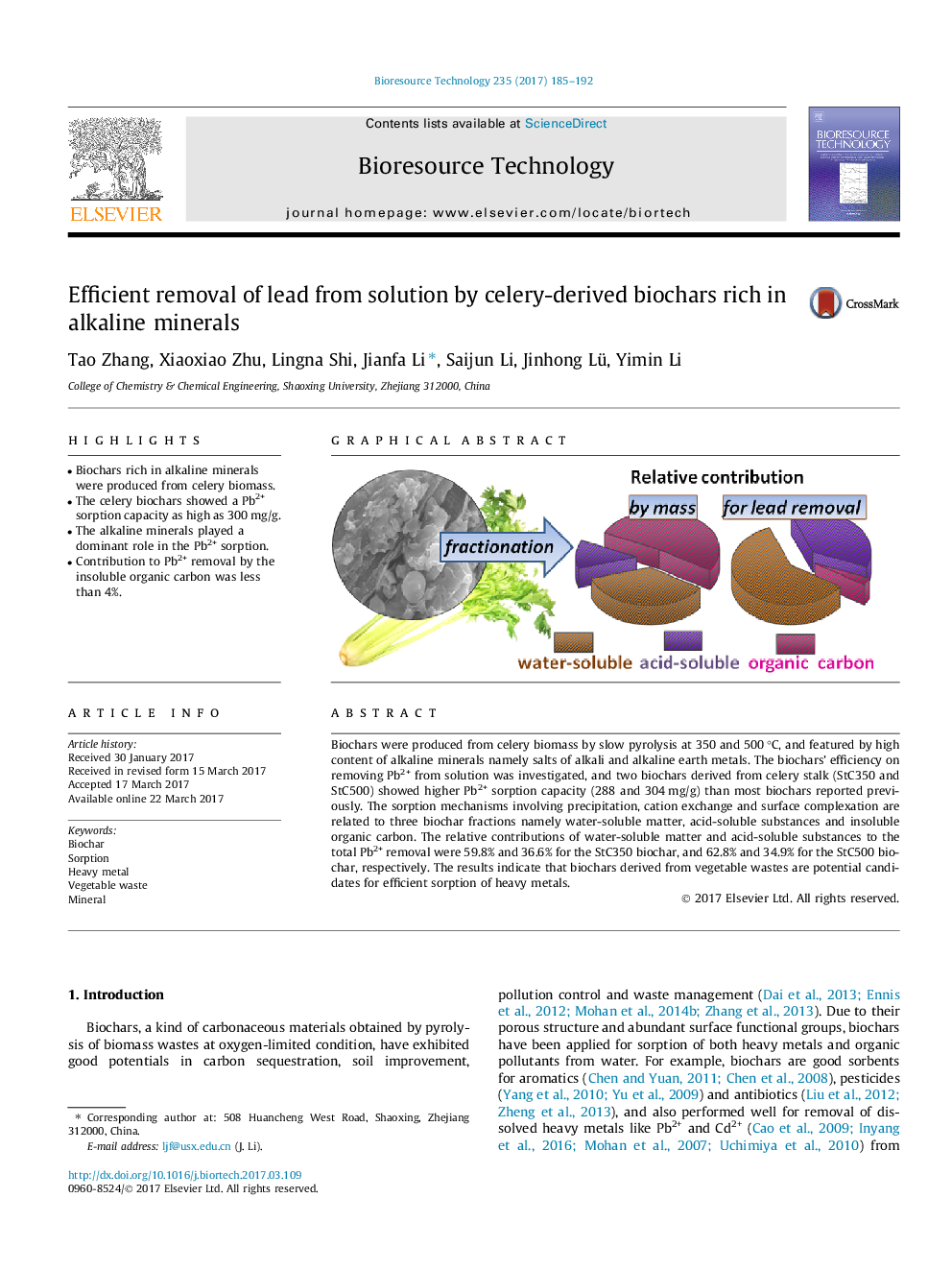| Article ID | Journal | Published Year | Pages | File Type |
|---|---|---|---|---|
| 4997358 | Bioresource Technology | 2017 | 8 Pages |
â¢Biochars rich in alkaline minerals were produced from celery biomass.â¢The celery biochars showed a Pb2+ sorption capacity as high as 300 mg/g.â¢The alkaline minerals played a dominant role in the Pb2+ sorption.â¢Contribution to Pb2+ removal by the insoluble organic carbon was less than 4%.
Biochars were produced from celery biomass by slow pyrolysis at 350 and 500 °C, and featured by high content of alkaline minerals namely salts of alkali and alkaline earth metals. The biochars' efficiency on removing Pb2+ from solution was investigated, and two biochars derived from celery stalk (StC350 and StC500) showed higher Pb2+ sorption capacity (288 and 304 mg/g) than most biochars reported previously. The sorption mechanisms involving precipitation, cation exchange and surface complexation are related to three biochar fractions namely water-soluble matter, acid-soluble substances and insoluble organic carbon. The relative contributions of water-soluble matter and acid-soluble substances to the total Pb2+ removal were 59.8% and 36.6% for the StC350 biochar, and 62.8% and 34.9% for the StC500 biochar, respectively. The results indicate that biochars derived from vegetable wastes are potential candidates for efficient sorption of heavy metals.
Graphical abstractDownload high-res image (165KB)Download full-size image
